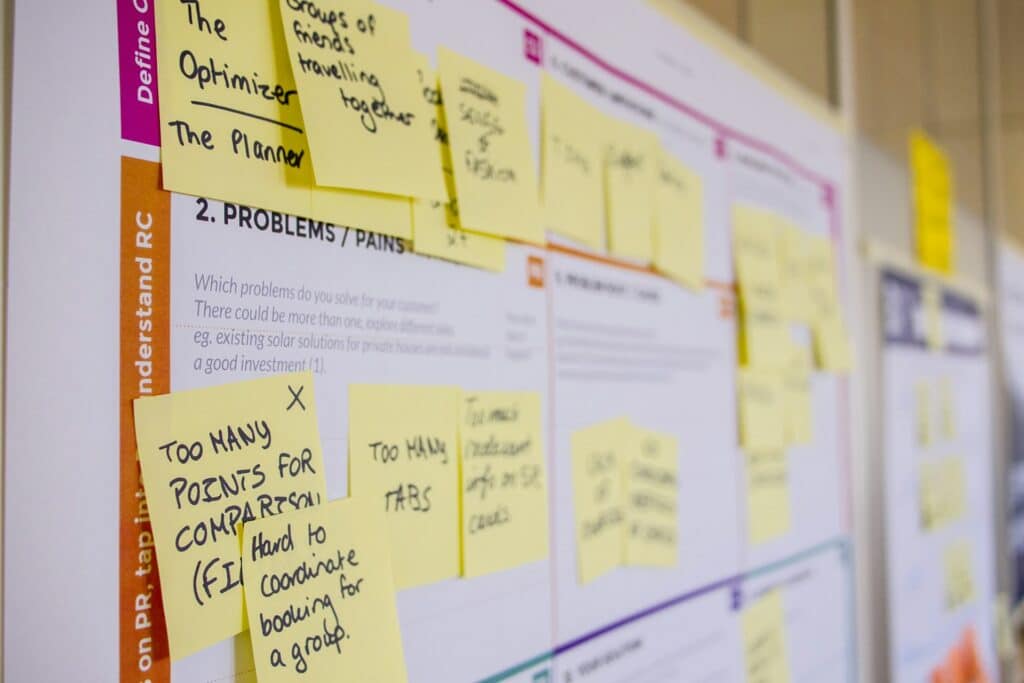Knowing how to collect customer feedback is one of the most powerful things in every line of business. It’s a great way to improve its products, services, and overall customer experience. Whether you run a startup, a SaaS platform, or a brick-and-mortar café, customer insights help you understand what works, what doesn’t, and how you can keep delivering value.

In this guide, we’ll go deep into customer feedback methods, practical strategies, and best practices for creating a strong customer feedback loop that drives continuous improvement. By the end, you’ll have a toolkit of ideas and approaches to help you collect customer feedback systematically and act on it effectively.
Why Customer Feedback Is So Important
Every business decision should ideally be customer-centric. Without feedback, you’re essentially guessing what your audience wants. Guessing is risky—not only can it lead to wasted time and money, but it can also erode customer satisfaction when expectations aren’t met.
Benefits of Collecting Feedback:
- Improves customer experience: By identifying pain points and addressing them, you keep customers happy and loyal.
- Drives product & service innovation: Direct input uncovers new ideas and unmet needs.
- Builds trust and engagement: Customers who feel heard are more likely to stay loyal.
- Reduces churn: Addressing problems quickly helps prevent customers from leaving.
- Guides strategic decisions: Instead of intuition alone, you rely on real customer insights.
How To Collect Customer Feedback: Methods
There are multiple ways to collect customer feedback. The key is choosing methods that fit your business model, customer base, and goals. Let’s explore the most effective customer feedback methods one by one.
1. Surveys
Surveys are the most common and versatile way to collect customer feedback. They can be sent via email, embedded in apps, or triggered after a specific customer action.
Best practices for surveys:
- Keep them short and focused (5–10 questions is ideal).
- Ask both closed-ended (rating scales, multiple-choice) and open-ended questions.
- Use timing wisely—like sending post-purchase surveys or in-app prompts after a milestone.
Example: A SaaS platform might ask: “On a scale of 1–10, how easy was it to set up your account?” followed by “What can we improve to make onboarding smoother?”
2. Customer Interviews
Interviews—whether face-to-face or via video call—allow for deeper conversations. They’re especially useful during product development or when launching a new service.
Advantages:
- Provides detailed qualitative customer insights.
- Builds relationships by showing customers you value their voices.
Tip: Use interviews selectively, as they can be time-intensive. Choose customers who represent different segments of your audience.
3. Feedback Forms and Pop-Ups
Quick feedback forms on websites or apps give you in-the-moment feedback. They’re perfect for getting impressions on navigation, ease of use, or checkout flow.
For example: A short popup—“Did you find what you were looking for today?”—can reveal usability issues you may miss in analytics.
4. Social Media Listening
Customers freely share opinions on platforms like Twitter, TikTok, Facebook, LinkedIn, or review sites. Social media listening is a passive but valuable way to collect feedback.
What to monitor:
- Mentions of your brand
- Competitor conversations for comparison
- Emerging trends in your industry
Tools like Hootsuite or Sprout Social help automate this process.
5. Online Reviews and Testimonials
Sites like Google Reviews, Yelp, Trustpilot, or G2 provide candid feedback. Many customers rely heavily on these when making purchase decisions—so ensuring you’re monitoring and responding matters.
Don’t just respond to reviews to protect reputation—use reviews as raw data for feedback analysis.
6. Customer Support Interactions
Your support tickets, chat logs, and FAQs are goldmines of feedback. Customers often point out recurring issues here.
Best practice: Categorize complaints and requests systematically. Over time, you’ll spot trends that help you prioritize fixes.
7. Usability Testing
If you’re offering digital products, observing customers while they use your product can reveal hidden problems. Usability testing uncovers friction points where customers struggle—even if they don’t report them.
8. Customer Behavior Analytics
Website heatmaps, click tracking, and usage patterns can supplement direct feedback. They don’t rely on asking customers directly, but still offer strong insights into behavior.
When combined with surveys and interviews, analytics can provide a 360-degree view of customer experience.

Best Practices When You Collect Customer Feedback
Now that we’ve covered customer feedback methods, the next step is to make sure your approach is effective. Feedback isn’t just about asking questions—it’s about asking the right questions, at the right time, in the right way.
1. Be Clear About Your Objective
Every feedback request should have a purpose. Are you trying to improve customer support? Refine onboarding? Launch a new feature? Narrow your focus for accurate customer insights.
2. Ask the Right Questions
Good questions are specific, unbiased, and actionable—avoid questions that force customers into a positive or negative response.
Examples:
- Instead of: “Do you like our product?”
- Try: “What is the most valuable part of our product, and what’s the most frustrating part?”
3. Timing Is Everything
Collect feedback when it’s most relevant. For instance, ask for feedback right after support tickets are resolved, rather than weeks later.
4. Use Multiple Channels
Different customers prefer different channels. Some may respond to email surveys, while others share feedback casually on Twitter. Use a mix of feedback tools to capture a broader spectrum.
5. Keep It Simple and Respectful
Customers are more likely to respond if requests are short and respectful of their time. Incentives can help, but keep them modest so you don’t bias responses.
Analyzing and Acting on Customer Feedback
Collecting data is only half the battle. What you do with it determines whether you actually improve your customer experience.
Step 1: Collect and Centralize Feedback
Store all results in one system—whether that’s a customer feedback platform, CRM, or shared database. Scattered feedback risks being ignored.
Step 2: Segment and Categorize
Break responses down by themes (pricing, usability, support, etc.), customer segments, and severity.
Step 3: Identify Patterns and Trends
One-off suggestions might not warrant major changes, but if 40% of customers mention checkout problems, that’s a clear priority.
Step 4: Share Insights Across Teams
Feedback shouldn’t stay with the customer support or marketing teams—share with product, sales, and leadership teams so everyone aligns.
Step 5: Close the Customer Feedback Loop
This is crucial. Customers want to know their voice made a difference. If a recurring issue is fixed, share the update:
“Thanks to your feedback, we simplified our checkout process—transactions are now 30% faster.”
This reinforces trust and motivates customers to keep giving feedback.
Common Mistakes to Avoid
Even well-intentioned feedback programs can fall flat. Avoid these traps:
- Asking too many questions → Overwhelms customers and lowers completion rates.
- Ignoring negative feedback → Criticism is often more useful than praise.
- Failing to act on data → Collecting feedback without change frustrates customers.
- Only asking once → Continuous feedback matters; customer satisfaction changes over time.

Tools to Help Collect and Analyze Feedback
A wide range of feedback tools can simplify the collection and analysis process. Popular options include:
- SurveyMonkey / Typeform (surveys)
- Hotjar / Crazy Egg (website heatmaps, user behavior)
- Zendesk / Intercom (customer support feedback integration)
- Google Forms (simple, free surveys for small businesses)
- Sprout Social / Hootsuite (social listening)
The right tool depends on your industry, customer base, and budget.
Making Customer Feedback Part of Your Business DNA
Customer feedback isn’t just a metric—it’s a mirror that reflects the real experience of your audience. By implementing thoughtful customer feedback methods, creating a repeatable customer feedback loop, and acting on both positive and negative input, businesses can continuously enhance customer satisfaction and loyalty.
The most successful companies don’t just collect customer feedback once—they make it part of their culture. Every survey, every customer interview, every review is a chance to improve. If you take action consistently, you’ll transform raw customer insights into a competitive advantage that fuels growth.
